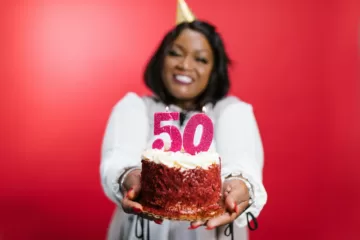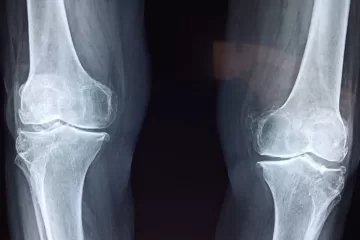Recent Research on Autism and Making Friends
Published by Tony Attwood on
Recent Research on Autism and Making Friends
The diagnostic criteria for autism include criterion A3, …l difficulties in making friends…(APA 2022). From our clinical experience, we would add that when friendships are made, an autistic child or adolescent may also have difficulty maintaining friendships. Non-autistic children can intuitively know how to initiate, sustain and repair friendships. These abilities seem elusive for autistic children who often yearn for the quality of friendships of their peers. Non-autistic children have four stages in developing friendship abilities from preschool to the teenage years (Attwood, 2006). As clinicians, we recognise that autistic children tend to have a concept of friendship that is developmentally younger than their non-autistic peers, their duration and frequency of social engagement with peers is less, and their social and friendship network is consequently reduced. Our clinical experience over several decades is that autistic children and adolescents have difficulty identifying and defining the components of friendship and understanding the multiple dimensions of friendship, which has now been confirmed by research (Petrina, Carter and Stephenson, 2014). Reading non-verbal communication and social context can also be difficult, as well as accommodating alternative perspectives and managing conflict in a friendship. There is also the issue of sensory sensitivity when socially engaged with noisy non-autistic peers and the perception of chaos when social games are complex and fast-moving. They may seek a safe sanctuary on the periphery of social activities where they can relax, but being alone may cue non-autistic peers to see them as a target for teasing and bullying. We have also noted that when a friendship is made, it may be with another autistic student who shares the same interests and an autistic way of thinking and relating. However, they may meet after school less often than would be expected by non-autistic peers. Their friendship tends to be primarily school-based.
Over the last decade, there has been research comparing the friendship abilities and experiences of autistic girls in comparison to autistic boys. Autistic girls tend to have significantly better social interaction and communication skills than autistic boys, and this characteristic may not be captured by current diagnostic instruments (Wood-Downie et al., 2021). The Friendship Questionnaire was designed to measure friendship skills in autistic children and adults (Baron-Cohen & Wheelwright, 2003). A study of 10-16-year-old children using this instrument found that autistic girls and non-autistic boys tended to have similar Friendship Quotient scores, and autistic girls had greater friendship quotient scores than autistic boys (Head, McGillvray and Stokes 2014). This may partially explain why autistic girls’ friendship abilities are perceived as comparable to typical boys and, therefore, not of clinical concern, and contributing to autistic girls choosing boys rather than girls as friends.
Friendships in the preschool and primary school years
A study of autistic children in the preschool years found that only 20% had friendships at school and that while at school, adults rarely tried to intervene to encourage engagement with peers. The adults’ primary involvement was to correct behaviour (Chang Shih & Kasari, 2016). In the primary school years, autistic boys tend to be overtly excluded by peers, while autistic girls are more ignored or overlooked rather than actively rejected (Dean et al., 2014) Autistic children become less socially connected with increasing grade level, especially after grade 4 when social games and friendships become more sophisticated and for boys, greater sportsmanship required (Rotherham-Fuller et al., 2010). Our clinical experience is that when autistic children are asked to name their friends at primary school, the children named tend not to consider the autistic child as part of their friendship group. This may be due to an autistic child having difficulty differentiating between someone who is friendly and a true friend as defined by their peers.
The degree of social engagement can vary considerably after grade 4 and partly depends on the child’s motivation for social inclusion or isolation (Calder, Hill and Pellicano, 2013). Non-autistic children, increasingly after grade 4, seek emotional connectedness in friendships, while autistic children see friendship as primarily someone to play with rather than someone who provides emotional support.
Research has also explored the challenges an autistic boy experiences in initiating and maintaining friendships, with first establishing who might be a suitable choice for a friend, a desire not to be the one who initiates contact, trying not to violate the social hierarchy of peers at school, and concerns about not being exploited or considered a nuisance (Daniel & Billingsley, 2010). Thus, considerable anxiety is associated with making friends and uncertainty about how a potential friend perceives or could take advantage of them.
Friendships in the high school years
In the high school years, there are changes in the conceptualisation of friendship for non-autistic teenagers, with greater disclosure of thoughts, feelings and experiences and an expectation of emotional support. Autistic teenagers tend to less often refer to self-disclosure, empathic understanding and affection as defining characteristics of friendship (Platos & Pisula, 2021). They also have difficulty perceiving, following and responding to the covert social rules of adolescent friendship, understanding and managing conflict and experiencing anxiety due to being in a group and feeling watched and potentially judged by multiple people (Cresswell, Hinch and Cage 2019).
A study of adolescent autistic girls confirmed how exhausting socialising can be, especially in groups and coping with ‘too many opinions’ and feeling they needed to act as a peacemaker when conflict and disagreements occurred within a friendship group (Foggo & Webster, 2017). Adolescent autistic boys can have difficulty understanding and knowing how to respond to the joking behaviour of their male peers. They can misinterpret intentions and become confused and agitated (Sedgewick, Hill and Pellicano 2018), increasing peer alienation.
During their high school years, autistic adolescents can feel deeply lonely and yearn for connection with a group of peers. They cannot rely on intuitive abilities in social situations and often have to rely on cognitively processing social information, which is exhausting. Peers may criticise them for making social errors, and they invariably lack a best friend to provide social guidance and compliments rather than criticism for their friendship abilities. There can be an acute and distressing recognition of not being popular, as illustrated in the following quotations: I wasn’t rejected but did not feel completely included, and I was supported and tolerated but not liked. They may blame themselves or their being autistic for peer rejection, which inevitably affects self-esteem, self-identity, mood, and perception of autism. There will probably be anxiety about making a social mistake, as described in the quote: I live in constant fear of performance anxiety over day-to-day social encounters. Before falling asleep, the autistic adolescent may review and ruminate over the social experiences of the school day, which may lead to a conscious retreat into solitude: I’d rather just be alone, but I can’t handle the loneliness.
In the yearning for social connection and friendship, autistic adolescents may be accepted by marginalised groups of teenagers that engage in activities and interests that cause concern for parents. This can include peers who engage in alcohol and drug use, are developing eating disorders or exploring being an alternative gender. The group welcomes and ‘adopts’ the autistic teenager, who has an enjoyable role of collecting, collating and communicating information from the Internet, which the group values.
In their teenage years, autistic adolescents may engage in camouflaging their autistic characteristics by masking and compensation strategies to be accepted by their peers and to make friends (Hull et al. 2017). Masking involves creating an alternative persona based on their observation and analysis of the social behaviour of their peers, and compensation may include teenage autistic girls preferring the friendships of boys who do not tend to have the complex and subtle expectations of friendships that occur between girls.
In our clinical experience, we increasingly recognise the value of having an autistic friend. They may find each other on the periphery of social activities or during lunchtime or after-school interest groups such as robotics, computer programming, science projects, playing music and singing together, or simply sitting beside each other drawing or reading.
Programmes to encourage friendship abilities
There are several evidence-based programmes to encourage friendship abilities. Elizabeth Laugeson originally developed the PEERS programme for autistic adolescents and young adults (Laugeson et al., 2015). The programme includes components on developing and maintaining friendships, conversation skills, electronic communication, appropriate use of humour and romantic relationships and dating etiquette. A recent meta-analysis of research on the PEERS programme found moderate to large effects across measures and informants, with the largest effect in social knowledge, then social functioning and the smallest in the frequency of get-togethers. The PEERS programme has now been adapted for preschool autistic children (Tripathi et al., 2022). The programme themes include meeting and greeting friends, sharing and taking turns, asking a friend to play, joining a game, and asking for and giving help.
The Healthy Relationships on the Autism Spectrum (HEARTS) programme is an online manualised programme (Rothman et al., 2022). Each 90-minute class is taught by one non-autistic and one autistic team teacher, with participants undertaking the programme in the privacy of their own homes. The programme includes themes such as the motivation to keep the relationship going as described in the quotation: My challenge is actually staying in touch and making the effort to actually feel like I want to talk to them, emotional scars from previous friendships, self-disclosure and emotional intimacy, the ‘chemistry’ of friendship, distinguishing between ‘healthy’ and unhealthy’ friendships and setting social boundaries and trust.
The Secret Agent Society is a home or school based computer programme that includes activities to explain and enhance friendship abilities (Beaumont et al. (2021) with more information at www.sst.institute.net
Parents and teachers recognise the popularity of Lego and Minecraft for autistic children and adolescents. Daniel Le Goff has developed and evaluated Lego-based therapy to encourage social and friendship skills (LeGoff et al., 2017). Dundon and Scott (2019) have written a manual describing how Minecraft can be used to teach autistic children social skills. Jessica Kingsley Publishers (JKP) has published a range of books on Social Stories, originally developed by Carol Grey that can be used to encourage specific friendship abilities. JKP has also published several books by Jennifer Cook that explore and encourage social abilities for autistic children and adolescents. We also recommend the Social Thinking programmes developed by Michelle Garcia Williams and Pamela Crooke, with more information at www.socialthinking.com
References
APA (2022) Diagnostic and Statistical Manual of Mental Disorders-5 Text Revision. American Psychiatric Association
Attwood, T. (2006) The Complete Guide to Asperger’s Syndrome. London, Jessica Kingsley Publishers.
Baron-Cohen and Wheelwright, (2003) Journal of Autism and Developmental Disorders 33, 509–517.
Beaumont et al. (2021). Journal of Autism and Developmental Disorders 51, 3637-3650
Calder, Hill and Pellicano (2013) Autism 17
Chang Shih and Kasari (2016). Autism 20
Cresswell, Hinch and Cage (2019) Research in ASD 61, 45-60
Daniel and Billingsley 2010 Focus on ASD and other Developmental Disorders 25
Dean et al. (2014) Journal of Child Psychology and Psychiatry 55, 1218-1225
Dundon and Scott (2019) Teaching Social Skills to Children with Autism using Minecraft London, Jessica Kingsley Publishers.
Foggo and Webster (2017). Research in ASD 35
Head, McGillvray and Stokes (2014) Molecular Autism
Hull et al. (2017) Journal of Autism and Developmental Disorders 47, 2519-2534
Laugeson et al. (2015) Journal of Autism and Developmental Disorders 45
LeGoff et al (2017) How Lego-based Therapy for Autism Works Jessica Kingsley Publishers
Petrina, Carter and Stephenson (2014) Research in Autism Spectrum Disorders 8, 111-126
Platos and Pisula (2021) Research in ASD 81 101716
Rotherham-Fuller et al. (2010) Journal of Child Psychology and Psychiatry 51, 1227-1234
Rothman et al (2022) Autism 26, 690-702
Sedgewick, Hill and Pellicano Autism (2018)
Tripathi et al. (2022) Jr Autism and Developmental Disorders 52, 2610-2626
Wood-Downie et al. (2021) Journal of Child Psychology and Psychiatry 62, 922-936


